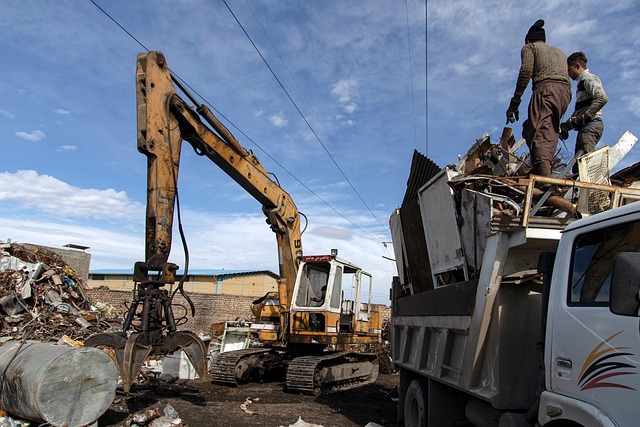Iran's cultural heritage showcases a unique blend of ancient history and modern Islamic influences. To fully appreciate this landscape, visitors should engage with local customs, participate in festivals like Nowruz, respect sacred spaces and traditions, and support local arts and handicrafts. By embracing these practices, travelers contribute to Iran's rich cultural identity while experiencing its historical depth in public spaces and artistic expressions.
Discovering Iran’s rich cultural heritage is a fascinating journey. This guide explores how visitors can respect local traditions, ensuring an authentic and meaningful experience. From understanding the importance of festivals like Nowruz to navigating public spaces with sensitivity, these practices foster cultural appreciation. Learn about supporting local arts and handicrafts, immersing yourself in the vibrant tapestry of Iranian life. Explore Iran with reverence for its ancient customs and embrace a unique cultural encounter.
- Understanding Iran's Cultural Heritage
- Showing Respect During Festivals and Celebrations
- Communicating Sensitively in Public Spaces
- Supporting Local Arts and Handicrafts
Understanding Iran's Cultural Heritage

Iran boasts a rich cultural heritage that is deeply rooted in its history and traditions. Understanding these elements is crucial when visiting or engaging with the country’s vibrant society. The saba era history offers a glimpse into ancient civilizations, while the islamic republic of iran government plays a significant role in shaping contemporary culture. Shia Islam practices in Iran are a central aspect of daily life and social norms, influencing everything from architecture to art.
By immersing oneself in local customs and traditions, visitors can gain a deeper appreciation for the islamic republic of iran government’s efforts to preserve its cultural identity. Whether exploring historical sites or participating in festivals, engaging with Iran’s cultural heritage fosters mutual understanding and respect. So, when you visit us at the islamic republic of iran government anytime, be prepared to immerse yourself in a landscape where history meets modern life, creating a unique tapestry of traditions that have stood the test of time.
Showing Respect During Festivals and Celebrations

During festivals and celebrations in Iran, such as Nowruz (the Iranian New Year), showing respect for local traditions is paramount. This involves participating in ceremonies with an open mind, learning about the significance behind rituals, and dressing appropriately. For instance, when visiting a bustling nowruz market adorned with vibrant rugs and art of Iran, taking time to appreciate the cultural heritage of Isfahan can be deeply enriching.
Iranians often welcome visitors during these times with warmth and hospitality. Respecting their customs means embracing their values, like family gatherings and communal meals. Moreover, being mindful of the environment, such as avoiding loud noises or inappropriate behavior in sacred spaces, demonstrates a deep understanding and appreciation for Iran’s rich cultural landscape. Give us a call at iran’s oil industry significance to learn more about how visitors can contribute positively while experiencing these special moments.
Communicating Sensitively in Public Spaces

When visiting Iran, it’s essential to remember that public spaces are not only places for physical interaction but also carry deep cultural and historical significance. Communicating in these settings requires sensitivity to local customs and traditions, which reflect the country’s rich heritage. For instance, greetings like “Salam” (peace) are more than mere words; they signify respect when exchanged between strangers. Understanding non-verbal cues is equally vital, as body language plays a significant role in Iranian culture. Gestures can convey friendliness or disrespect, so being mindful of these nuances is key to avoiding misunderstandings.
In crowded areas like bustling bazaars, where shopping experiences are an essential part of the Iranian culture facts, tourists should be aware of personal space and noise levels. The vibrant atmosphere may encourage lively interactions, but it’s crucial to respect others’ personal boundaries. Additionally, being mindful of religious sites and practices is paramount, especially when visiting historic places like the Qom Shrine of Imam Reza, where devout locals gather. Understanding that Iran’s primary religion is Zoroastrianism, with roots tracing back to its origins in Iran, can foster a deeper appreciation for the traditions upheld in these sacred spaces.
Supporting Local Arts and Handicrafts

Iran is renowned for its rich cultural heritage and vibrant artistic traditions that have evolved over centuries. Supporting local arts and handicrafts is one of the best ways to respect and preserve these unique cultural aspects. From intricate tapestries woven with stories from Persian literature to exquisite pottery reflecting regional landscapes, Iran’s crafts are a testament to the skill and creativity of its artisans.
Exploring Iranian markets and purchasing traditional items not only provides an authentic experience but also contributes directly to the livelihoods of local craftspeople. Additionally, engaging with iranian music genres, such as classical and folk music, which have deep roots in the country’s history, offers a deeper understanding of Iran’s cultural identity. Visit places like the Susan Gateway to Persia, where traditional arts are celebrated and preserved, or even find us at Iranian cinema overview to immerse yourself in the country’s artistic expressions, including film and visual arts that reflect both historical narratives and contemporary perspectives. The spirit of respect for local traditions, as seen during the Iranian Revolution of 1979, continues to shape Iran’s cultural landscape today.
Respecting local traditions in Iran is a meaningful way to connect with the country’s rich cultural heritage. By understanding and appreciating customs, such as participating in festivals, communicating respectfully in public spaces, and supporting traditional arts, visitors can have a more authentic and memorable experience. Embracing these practices not only shows appreciation for Iran’s past but also contributes to the preservation of its vibrant tapestry for future generations.





Leave a Reply